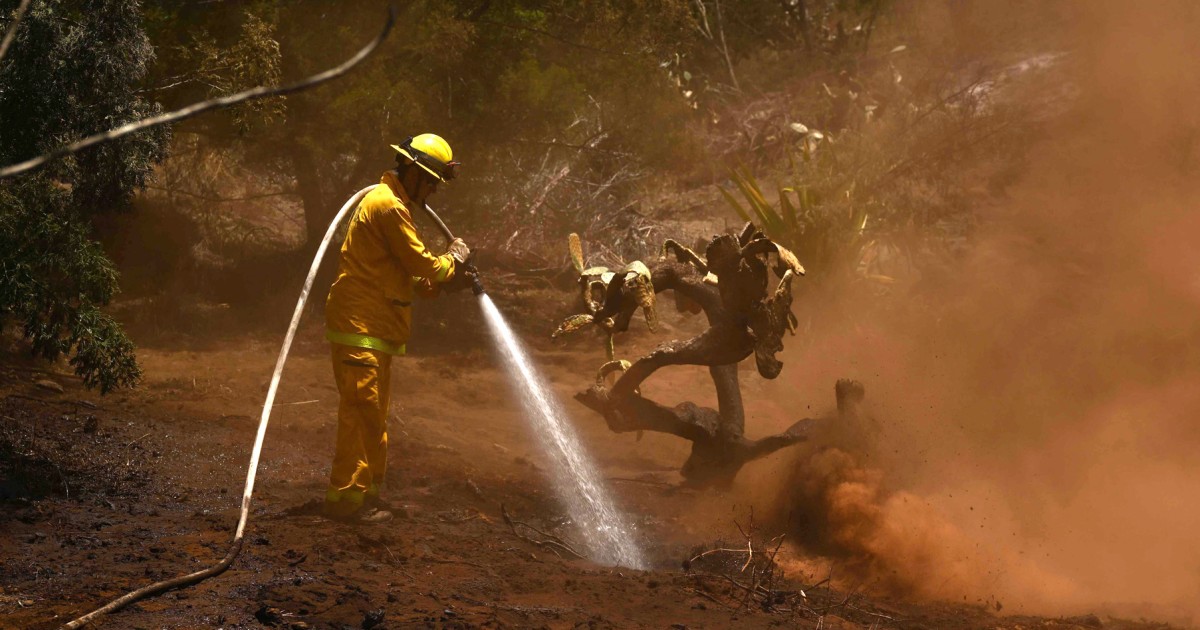
“A lot of these lands, former sugarcane and pineapple lands, the majority of them are sitting fallow,” Thorne said. “There’s no management whatsoever.”
One nonnative species — guinea grass — can grow 6 inches in a day, according to Walker, the fire protection forester, who spoke about the problem during an April videoconference. When burned, guinea grass can produce 20-foot flames.
Human-caused climate change could be fueling grass growth because of increased atmospheric carbon dioxide, Mora said.
The grasses grow quickly during rainy stretches, then dry out — and burn if they catch a spark — during periods of drought, like the recent trend on Maui. Research suggests climate change could be intensifying that cycle.
Hawaii’s Division of Forestry and Wildlife is the primary responder for wildfire on 26% of Hawaii lands, and it assists county fire departments and federal partners on another one-third of state lands, Walker said on the videoconference. The division is part of the Hawaii Department of Land and Natural Resources, which this fiscal year budgeted about $28 million in its operating budget for natural resources and fire protection, including species conservation, fire suppression and fire prevention, according to Hawaii’s state budget. Budget planners estimated the federal government would contribute another $21 million to conservation and wildfire efforts.
As of April, the agency maintained about 142 miles of firebreaks — strips of cleared or plowed land designed to stop a fire from progressing.
Scientists say funding levels are insufficient when so much of the landscape is covered by fire-prone fuel.
“That job is just too huge,” Mora said, estimating that the cost of landscape restoration to reduce fire risk could require more than $1 billion. “They’re completely underfunded.”
Nonprofits struggled to secure money, too. In a 2019 grant application, the Hawaii Wildfire Management Organization wrote that most of its funding came from federal grants for which it had had to compete against “western US states whose wildfire issues are more publicized.” The nonprofit added it was asking for state funds after missing out on federal grants for 2019-2021.
“Because of this fire, we’ll pay 10 times over what it would have taken to fix this problem in the beginning,” Mora said.
